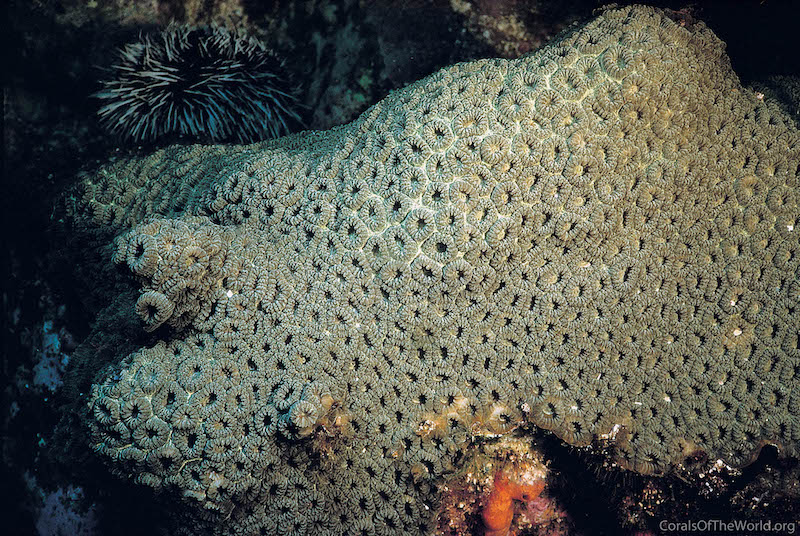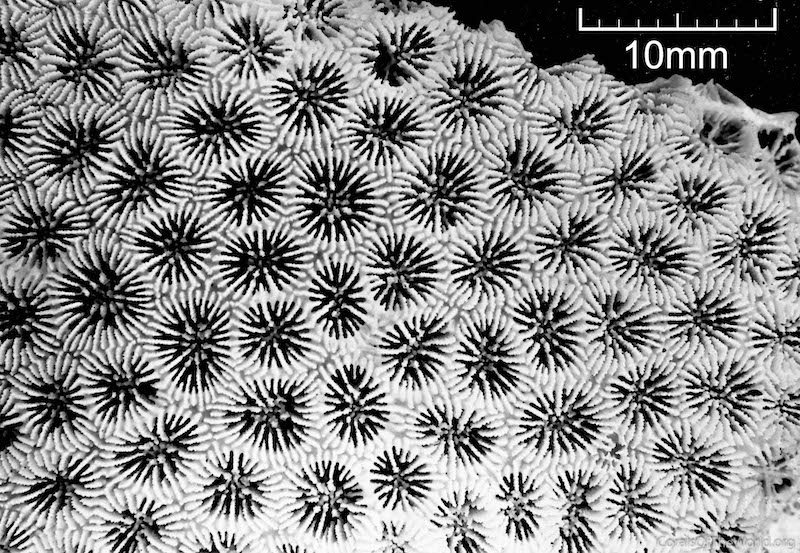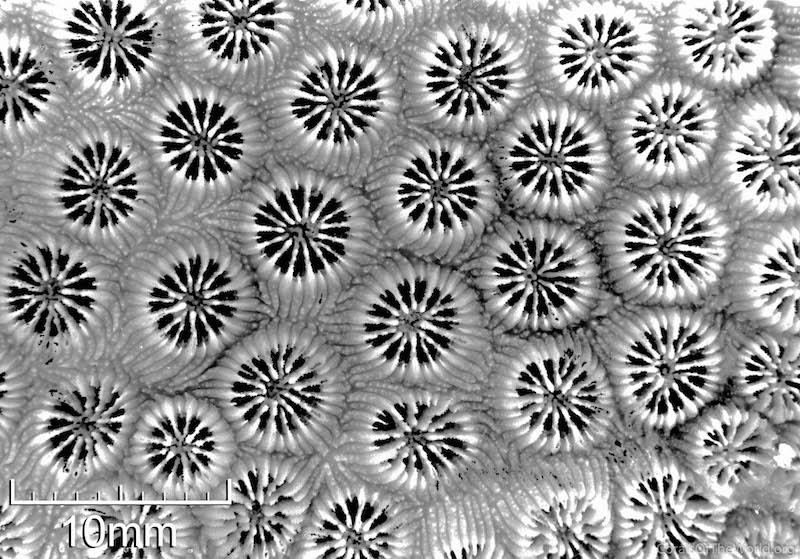Plesiastrea is a little species of stony coral which is often confused for Cyphastrea and rarely recognized for being a unique coral in the aquarium hobby. This genus has sported just one species, P. versipora, for many decades but a recent research paper has finally teased apart just one more to add to the group, Plesiastrea peroni.
In general P. versipora does quite closely resemble many species of Cyphastrea but it has slightly larger, more spaced out corallites which are just a tad more fleshy in the polyps and in the tissue between the corallites. The colonies we notice in the aquarium hobby are almost always bright green overall, a color which is not in high demand for most reef aquariums so it’s no surprise that they aren’t given more credit.
Plesiastrea peroni on the left, P. versipora on the right
One unique aspect of Plesiastrea is that it is rare or uncommon in tropical reefs closer to the equator while it becomes more frequently encountered at higher latitudes, but it turns out these Plesiastrea from cooler reef habitats is mostly the newly resurrected Plesiastrea peroni. Coral scientists have known for long time that these separate populations of Plesiastrea actually host different species of Zooxanthellae but molecular analysis has teased apart some physical differences between the P. versipora and P. peroni.
The layout and patterns of the corallites of both Plesiastrea species look quite similar but you can clearly see that those of P. peroni are spaced much more close together while there is a significant amount of spacing between the corallites of P. versipora. If you have a keen eye for odd looking Cyphastrea you might come across some Plesiastrea versipora in the aquarium hobby but due to their preference for cooler habitats you won’t find the new P. peroni and even pictures of this coral are very rare since there isn’t much SCUBA diving at subtropical reefs either. [ScienceDirect]





